The Siberian husky is an arctic pup that has made their way into homes around the globe. They bare a shocking resemblance to their wolf ancestors. And they possess unique personality traits that set them apart from other canine friends. There is no dog out there like the Siberian husky! Many animal lovers want to welcome them into their families. Before you do so, it’s important to know all about Siberian husky progression.
Because Siberian huskies are so unique, it’s important to understand the breed before you adopt one of your own. In this article, we introduce you to their growth chart by age, training tips, energy levels, and health complications!
Let’s get started!
Brief Siberian Husky Summary
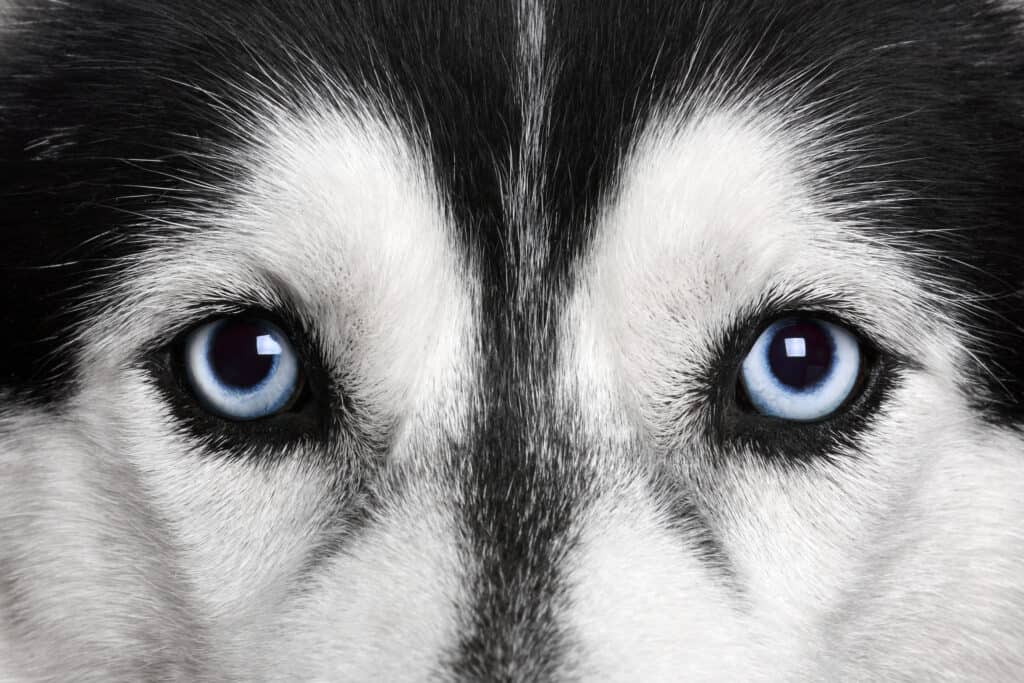
The first huskies were originally used as sled dogs for transport purposes, but they were also known for providing loving companionship.
©244162930/Shutterstock.com
As their name implies, the Siberian husky was first created in the Siberian arctic. It was bred to be a working dog that assisted the Chukchi people. The first huskies were originally used as sled dogs for transport purposes. But they were also known for providing loving companionship to their humans. With how well-rounded huskies became, it wasn’t long before they were imported to Alaska for similar work.
The breed was introduced to sled work in Alaska. This opened the door for the pups to be welcomed into other parts of America as well. Their striking appearance and their goofy personalities made waves! Now the husky is one of the most treasured breeds around.
Siberian Husky Growth and Weight Chart by Age
There are many husky traits and information you should be aware of before welcoming a pup into your home. Their expected growth progression is one of them. We want you to be prepared for how much your Siberian husky will change throughout their first year of life. So, let’s break down their growth, month by month.
| Age | Male Weight | Female Weight |
|---|---|---|
| Birth | About 1 pound | About 1 pound |
| 1 Month | 3-5 pounds | 2-6 pounds |
| 6 Weeks | 4-9 pounds | 3-5 pounds |
| 2 Months | 10-15 pounds | 5-10 pounds |
| 3 Months | 20-30 pounds | 15-20 pounds |
| 4 Months | 27-33 pounds | 20-25 pounds |
| 5 Months | 34-39 pounds | 23-27 pounds |
| 6 Months | 32-40 pounds | 25-33 pounds |
| 7 Months | 35-45 pounds | 27-35 pounds |
| 8 Months | 40-50 pounds | 28-37 pounds |
| 9 Months | 40-50 pounds | 29-39 pounds |
| 10 Months | 45-55 pounds | 30-42 pounds |
| 11 Months | 45-55 pounds | 30-45 pounds |
| 12 Months | 45-60 pounds | 35-50 pounds |
| 2 Years | 45-60 pounds | 35-50 pounds |
As you can see, the weight range can vary slightly from male to female Siberian huskies. For an accurate idea of how much your husky will weigh once he reaches maturity, seeing the parents is ideal.
When Will My Siberian Husky Stop Growing?
Siberian huskies will grow quickly throughout the first year of their life. You may wonder just how long this growth will last. The Siberian husky is considered a medium-sized dog. You can expect them to complete most of their growth during the first 12 months of life. Your Siberian husky should reach his ultimate height by the time he is one year of age. But he may continue to fill out a bit in the following six months. Because of this, you can typically expect your Siberian husky to stop growing once he is 18 months old.
How Big Will My Siberian Husky Be When It’s Fully Grown?

Most Siberian huskies will weigh anywhere from 35-60 pounds at maturity.
©Ksenia Raykova/Shutterstock.com
Now that you know that you can expect your Siberian husky to stop growing around 18 months of age, you may wonder just how big you can expect your adult husky to be. While size at maturity will vary from male to female husky, you can typically expect your Siberian husky to weigh anywhere from 35-60 pounds.
Some Siberian huskies will fall outside of this range, so we always suggest meeting your huskie’s parents when you adopt them. This is the most accurate way to estimate your dog’s eventual size when they are fully grown.
When Should My Siberian Husky Stop Eating Puppy Food?
Did you know that all puppies should eat puppy food until they have completed the majority of their growth? Dogs need higher volumes of protein and calcium as they grow, along with a boost in calories to keep up with their metabolism. A kibble made just for puppies will make sure your growing canine friend has all the nutrients they need to reach healthy adulthood.
For these reasons, we always suggest giving your Siberian husky a diet made for puppies until they are one year of age. While they may continue to fill out slightly until they are 18 months old, they should complete the majority of their growth throughout their first year. Once your husky turns one, you can safely switch them over to adult dog food for medium-sized dogs.
When Will My Siberian Husky Start Losing Teeth?
Just as you and I have a set of baby teeth that fall out as our adult teeth grow in, our beloved companions are no different. Though humans typically lose their baby teeth between the ages of five to 12 years of age, our dogs have a much shorter range of tooth loss.
On average, most Siberian huskies will begin to grow their baby teeth around three weeks of age. These are the sharp teeth that often chew on your fingers or feet, but these teeth will not stick around for long. Once your husky is 12 weeks old, their adult teeth will begin to develop.
As these permanent teeth grow in, their baby teeth will fall out one by one to make way for their permanent teeth. This process will occur over the next few months, but most Siberian huskies will have a full set of permanent teeth by the time they are six months old.
The Unique Personality of the Siberian Husky
As we mentioned above, the Siberian husky has a unique personality that sets them apart from other canine friends. While any dog can be a bit goofy and talkative, the Siberian husky takes this to a new level. The Siberian husky is known to be highly energetic, spunky, silly, and extremely vocal.
While these traits are why so many people have fallen in love with the Siberian husky breed, all future husky parents should be aware of the goofy pup they are welcoming into their family. You should also be aware of the fact that these pups require at least 45 minutes of daily exercise to prevent these traits from turning into unmanageable behaviors.
When Should I Start Training My Siberian Husky?
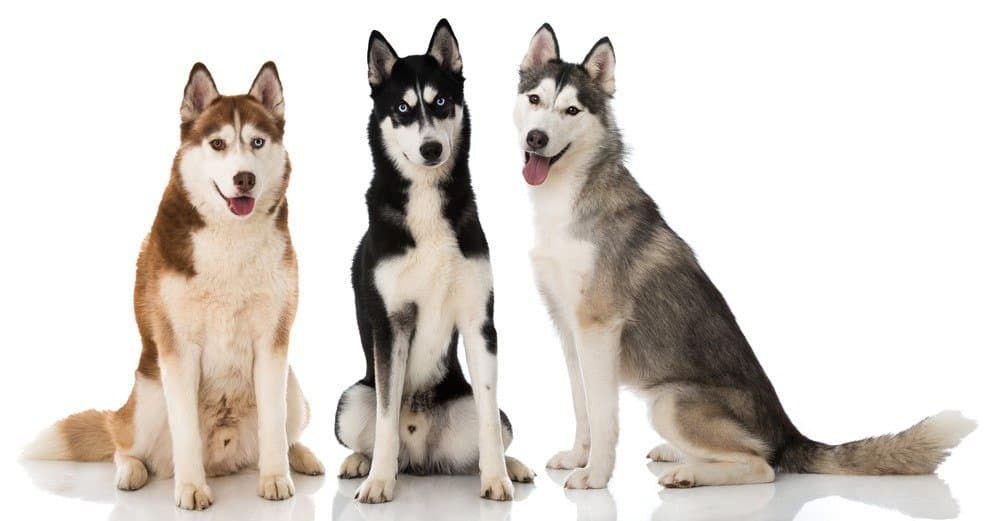
The Siberian husky needs a firm and consistent training routine.
©Dora Zett/Shutterstock.com
With a dog as spunky and energetic as the husky, it is essential to begin their training from the moment they enter your home. Not only do they need a structured training routine from the moment they enter your home, but they also require a pet parent who is experienced with training stubborn pups. The husky is not ideal for first-time pet parents due to how challenging they can be to train, so it’s important to be aware of how involved their training process will need to be.
In addition to implementing an obedience training routine as soon as you adopt them, you will also need to factor in socialization. Huskies can develop undesirable behaviors if they are not exposed to sights and sounds outside of their home, as well as to unfamiliar people and animals. To make sure your Siberian husky becomes the well-rounded family dog of your dreams, we always suggest introducing them to new people, animals, environments, and noises.
Meeting new dogs is important for Siberian husky development, but just be sure that you are not bringing them around any unfamiliar or unvaccinated dogs until they have been vaccinated with all three sets of their parvovirus and canine distemper vaccinations. Your pup will not be fully protected against these viruses until they have completed their puppy vaccination series.
What Commands Should I Teach My Siberian Husky First?
If you are just diving into training your Siberian husky, then you may wonder which commands you should focus on first. While each family will have their own commands that are a priority, these are the common obedience commands that we think all huskies should learn early on.
- Sit
- Lay down
- Stay
- Come
- Drop it
In addition to the basic commands we listed above; you should also begin to socialize your Siberian husky from the moment you dive into their obedience training process. When offering training alongside socialization, your husky pup will have the tools they need to grow into a well-rounded adult husky.
When Should My Siberian Husky Be Fully House Broken?
In addition to diving into obedience training as soon as you adopt your Siberian husky, you will also need to tackle potty training as well. The Siberian husky is very intelligent, but they can be a bit stubborn. So, while your Husky should grasp potty training fairly quickly, you will need to remain consistent with their potty training, outdoor time, and even their feeding schedule. When you are consistent with your housebreaking tools, most huskies should be fully potty trained within three to five months.
When Should My Siberian Husky Be Spayed or Neutered?
If you are not planning to breed your Siberian husky, then you may be curious as to when is the best time to have them spayed or neutered. Not only will sterilization prevent any unwanted litter down the line, but it can also prevent any life-threatening reproductive infections and cancers.
We understand that you always want to make the best decision about your dog’s health, and this includes choosing the best time to have them fixed. Though you will always see varying suggestions on the best timeframe, most veterinary experts will agree that between the ages of six months to one year is the best time to spay or neuter your Siberian husky.
When Will My Siberian Husky Calm Down?
If you have a hyper Siberian husky on your hands, then you may wonder when they will finally start to calm down. The husky is known for being more energetic than most pups, so you should always expect to have a goofy dog in your home. However, though the husky is a ball of energy when they are young, they should start to calm down once they reach four to five years of age. They will still be playful and interested in their favorite activities, but you should see a decrease in their constant playful behavior.
Potential Siberian Husky Health Issues
Most Siberian huskies will live a long and happy life up to 15 years of age, but there are a few health complications they may encounter throughout their life. As long as you know the common health issues in huskies to be on the lookout for, you can jump into action when needed!
Hip Dysplasia
Hip dysplasia refers to the abnormal formation of the canine hip joint. This abnormal formation of the joint leads to laxity in the hip joint, which causes the joint to rub and grind. A predisposition to this abnormality can be passed down from husky to husky, leading to the development of this joint complication once they reach young adulthood. Common signs of hip dysplasia include joint stiffness, difficulty getting up and down, muscle wasting in the hind end, a change in gait, and sensitivity on their back end.
Eye Conditions
Huskies are more prone to developing eye conditions such as cataracts, corneal dystrophy, and progressive retinal atrophy. These conditions can impact your dog’s vision over time. It can eventually lead to blindness if not diagnosed early on or managed properly. This is why it is essential to inform your vet of any changes in your husky’s eye appearance. Also, keep up with his annual vet exams. Your vet can perform basic eye exams at their annual visits to search for any evidence of these conditions.
Epilepsy
Epilepsy is a neurological disorder that can lead to seizures and other strange neurological behavior. It most often develops in dogs one to three years old. But it can develop outside of this range as well. There is no set cause of epilepsy in dogs. However, we do know that it is more prevalent in our husky canine friends. Epilepsy can be managed long-term, so we always suggest symptomatic pets be assessed immediately. Symptoms include muscle tremors, disorientation, seizures, or hallucinations.
Arthritis
Due to their increased risk of hip dysplasia, the Husky can often develop arthritis as they age. The laxity in the abnormal hip joints will cause them to grind, which leads to a vicious cycle of inflammation. This inflammation can be extremely damaging over time, eventually causing breakdown within the joint. This breakdown within the joint is referred to as arthritis, and it can deeply impact the dog’s quality of life.
Puppy Pictures
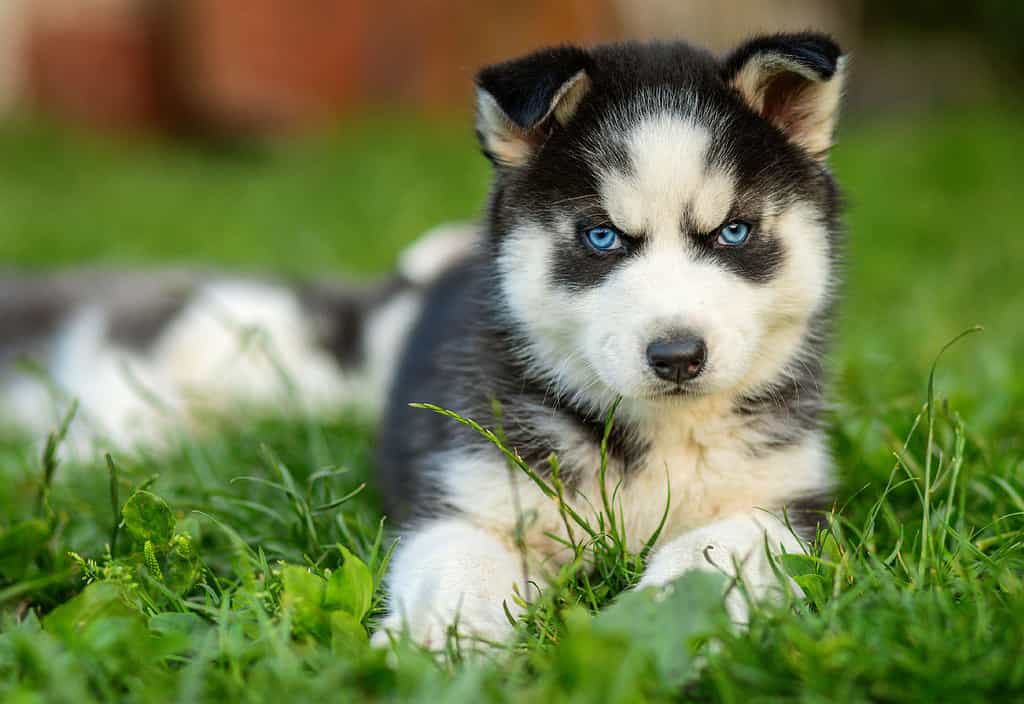
Siberian husky puppies have striking blue eyes, just like adults.
©iStock.com/Andrii Zorii
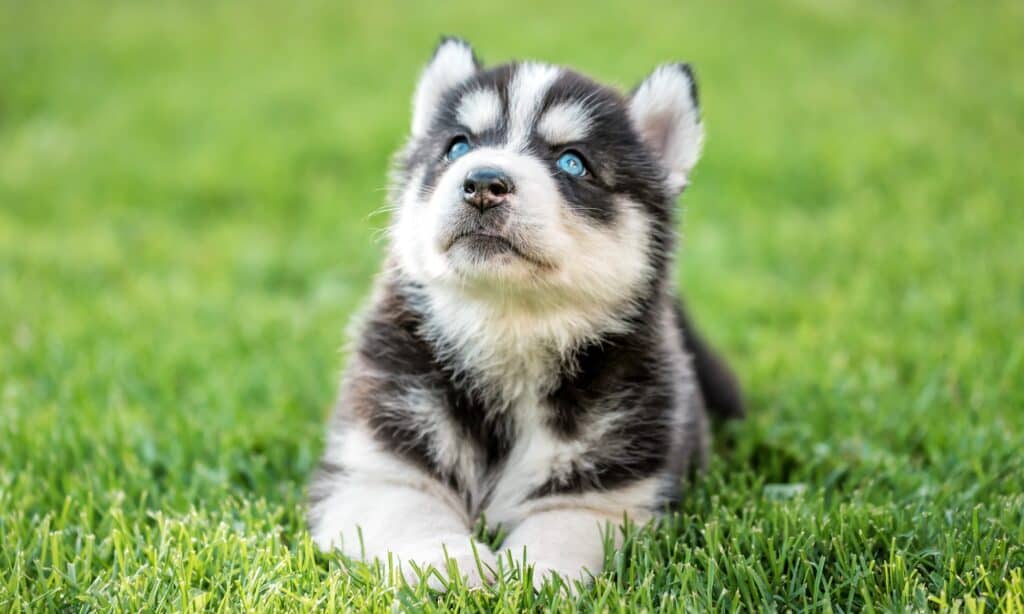
A Siberian husky puppy is a beautiful sight!
©iStock.com/vovashevchuk
Pictures at 6 Months
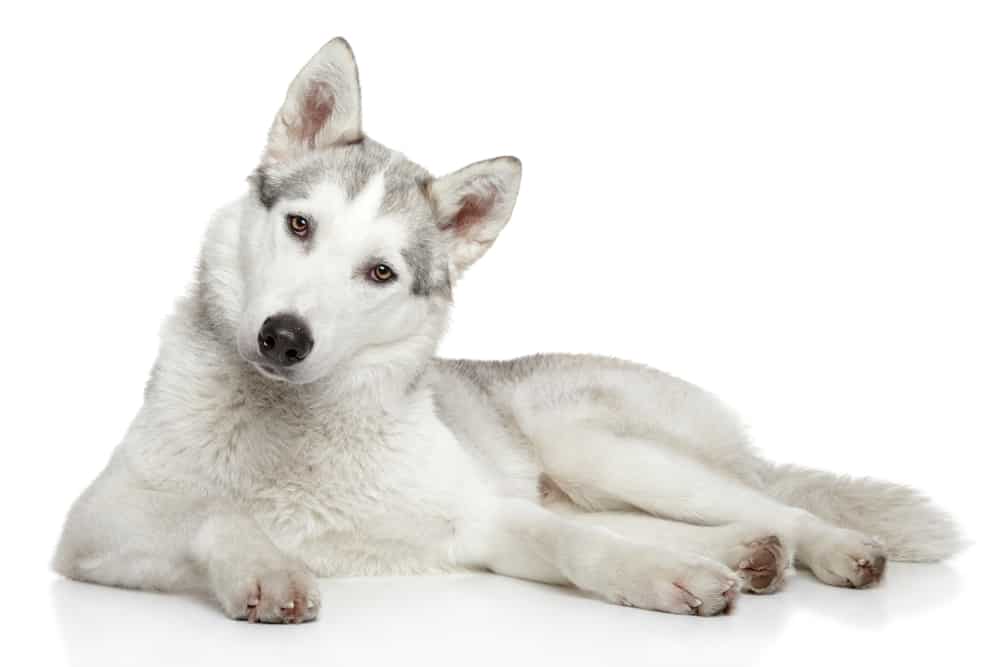
A teenage Siberian husky will be medium sized around six to eight months of age.
©Jagodka/Shutterstock.com
Adult Pictures
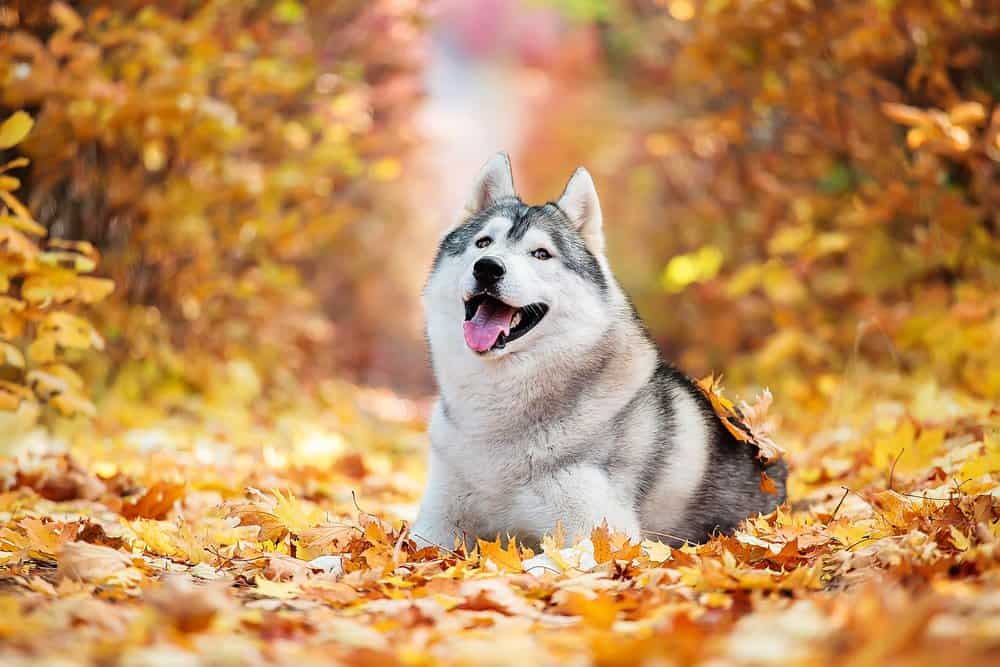
Adult Siberian huskies enjoy being outside.
©Sergey Bessudov/Shutterstock.com

Siberian Huskies are right at home in the snow.
©iStock.com/ortlemma
Are you ready to welcome the lovable Siberian husky into your family?
Do Siberian Huskies Bark a lot?
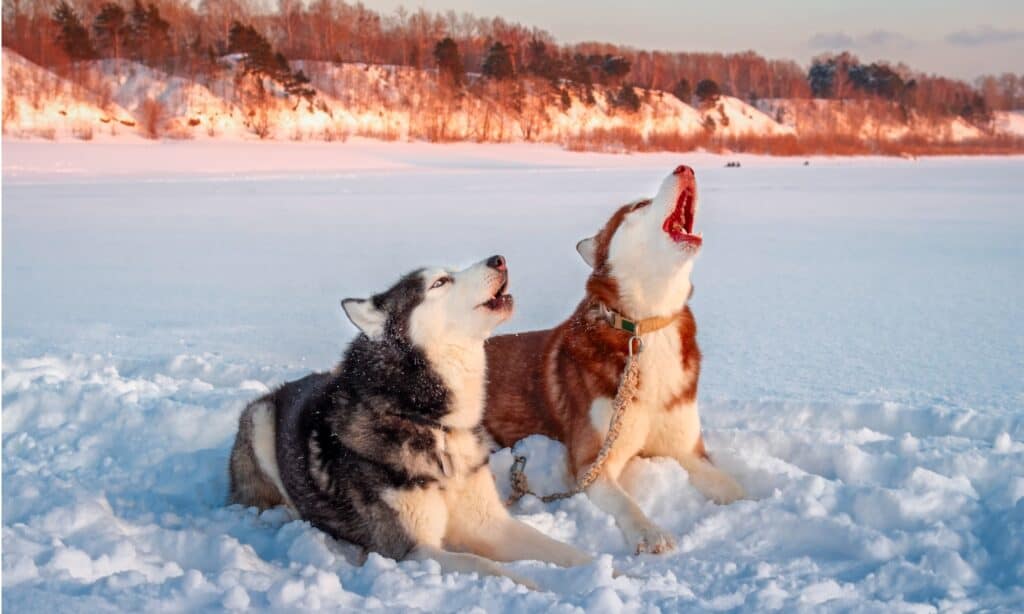
Huskies are some of the dogs that love to howl.
©iStock.com/Автор
The Siberian husky is not particularly known for being one of the most frequent barkers and while they may bark when they are in distress or when they are excited to see their family, they are more likely to howl, chirp, and whine. However, let it be known that they love to hear the sound of their own voices and are known to be very vocal, which some owners equate to ‘talking’, and this puts them at the top of the list for loud breeds.
As huskies normally work in packs, they will use their voices as a way of communicating with each other and this carries over to the human pack. A husky will never hesitate to let their owners know what is going on with them, and this can also lead to endless hours of entertainment.
The photo featured at the top of this post is © Sbolotova/Shutterstock.com
Ready to discover the top 10 cutest dog breeds in the entire world?
How about the fastest dogs, the largest dogs and those that are -- quite frankly -- just the kindest dogs on the planet? Each day, AZ Animals sends out lists just like this to our thousands of email subscribers. And the best part? It's FREE. Join today by entering your email below.
Thank you for reading! Have some feedback for us? Contact the AZ Animals editorial team.






